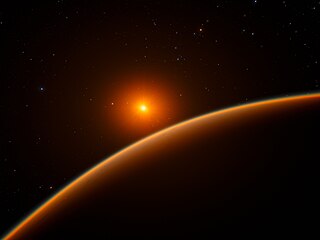LHS 1140 b

Description: LHS 1140 b is an exoplanet orbiting within the conservative habitable zone of the red dwarf LHS 1140. Discovered in 2017 by the MEarth Project, LHS 1140 b is about 5.6 times the mass of Earth and about 70% larger in radius, putting it within the super-Earth category of planets. It was initially thought to be a dense rocky planet, but refined measurements of its mass and radius have found a lower density, indicating that it is likely an ocean world with 9-19% of its mass composed of water. LHS 1140 b orbits entirely within the star's habitable zone and gets 43% the incident flux of Earth. The planet is 49 light-years away and transits its star, making it an excellent candidate for atmospheric studies with ground-based and/or space telescopes.
Physical Properties
Mass (Jupiter mass): 0.0176195704243642 MJ
Radius (Jupiter radius): 0.154 RJ
Density: 5.9 g/cm³
Equilibrium Temperature: 226.0 K
Orbital Parameters
Orbital Period: 24.73723 days
Semi-major Axis: 0.0946 AU
Eccentricity: 0.043
Inclination: 89.86°
Host Star Properties
Host Star: LHS 1140
Spectral Type: M4.5 V
Temperature: 3096.0 K
Stellar Mass: 0.18 M☉
Stellar Radius: 0.22 R☉
Discovery Information
Planet Letter: b
Object ID: 3.12019
Host ID: 2.101278
Discovery Date: 2017-04
Discovery Year: 2017
Discovery Method: Transit
Discovery Locale: Ground
Discovery Facility: MEarth Project
Discovery Instrument: Apogee CCD Sensor